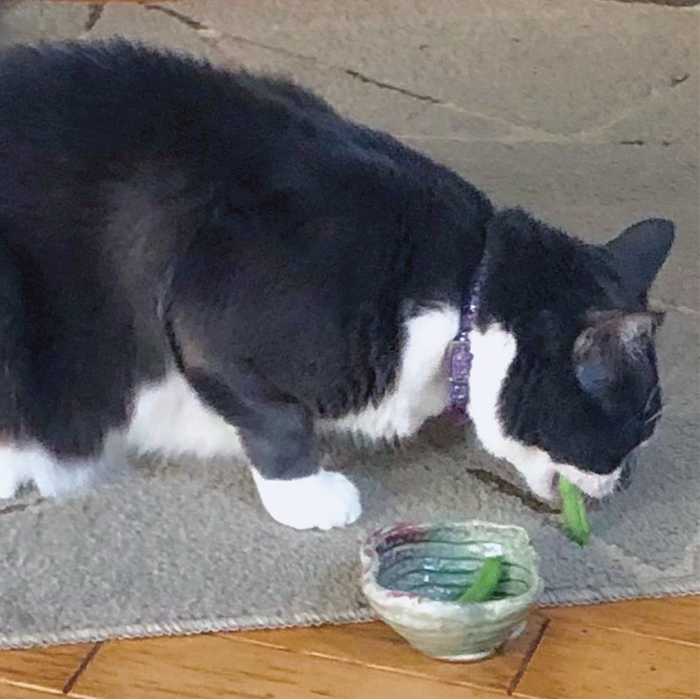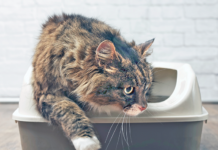Q. Dear Elizabeth,
I am a 5-year-old neutered male who loves reading your column and maybe you can ask your veterinary doctor friends for some advice. Most “cat staff” don’t support an omnivorous cat, but besides my excellent dry cat food, I love veggies. Especially kale, green beans, peppers, spinach, and cucumbers. Here is the problem: My urine has a very high pH, in the range of 9.5, but I don’t have any symptoms of infection, difficulty in urinating, pain, or any other signs.
I love my veggies—but am I at risk for a serious health issue?
Fondly,
Squatchy Burger

A. Dear Squatchy,
Thanks for getting in touch, and I am happy to hear that you are doing well, with no obvious signs of any health issues. Urine pH is an important topic in maintaining optimal feline urinary tract health, and 9.5 is pretty high pH for cat urine, so perhaps a brief discussion of things that can promote high urine pH and the potential problems that can arise from elevated pH in cat urine would be helpful.
“Potential of hydrogen,” or pH, refers to the hydrogen ion concentration in a solution. The pH scale of 1 to 14 measures how acidic or basic a solution is, with pure water having a pH of 7, acidic solutions having a pH lower than 7, and basic (alkaline) solutions having a pH of greater than 7. Normal cat urine pH should be in the range of 6 to 6.5, and various conditions can either raise or lower urine pH in cats.
A major consideration is that abnormal urinary pH can promote the formation of crystals/stones that can irritate and/or obstruct the urinary tract. The consequences of such irritation/obstruction can range from an increased urgency to urinate or blood in the urine to potentially life-threatening obstruction and inability to urinate.
For this reason, any cat that shows signs of increased urinary frequency with small amounts of urine produced, painful urination, difficulty urinating, blood in the urine, or inability to urinate should be seen by a veterinarian immediately.
The type (i.e. chemical composition) of crystals/stones that can form in cat urine depends, in large part, upon urinary pH. Struvite crystals (the most common type in cats, composed primarily of magnesium, phosphorus, and ammonium) form more readily in alkaline urine, while calcium oxalate crystals are more likely to form in acidic urine. (You can read more in our May 2019 article “A Crystal Ball in Your Cat’s Urine,” available at catwatchnewsletter.com.)
A number of medical conditions can cause urinary pH to be too high or too low in cats, including diabetes and kidney disease, which can cause low urinary pH. Bacterial infections and hyperthyroidism can promote alkaline urine (high pH), and diet and (less commonly) chemical properties of drinking water can influence the pH of cat urine.
While I cannot determine the cause of your high urine pH from afar, having your “cat staff” speak with your veterinarian about ruling out a urinary tract infection and hyperthyroidism seems like a reasonable first step.
If these are not present, the possibility of the vegetables in your diet contributing to this finding is a reasonable notion to consider (depending upon how much of your diet is composed of vegetables), as high vegetable intake can promote high urine pH in cats. It may be that this will be difficult to rule out without temporarily eliminating vegetables from your diet (sorry!).
Your veterinarian is your best resource for a more in-depth discussion of how to rule out other potential causes of your urinary pH issues, how to manage your urinary pH so that it stays in the normal range, and the potential consequences of chronic urinary pH abnormalities, but I hope that this brief explanation is helpful and will prompt your staff to take appropriate steps to assure your continued good health.
Best of luck, and please send an update when you can.
All my best,
Elizabeth



